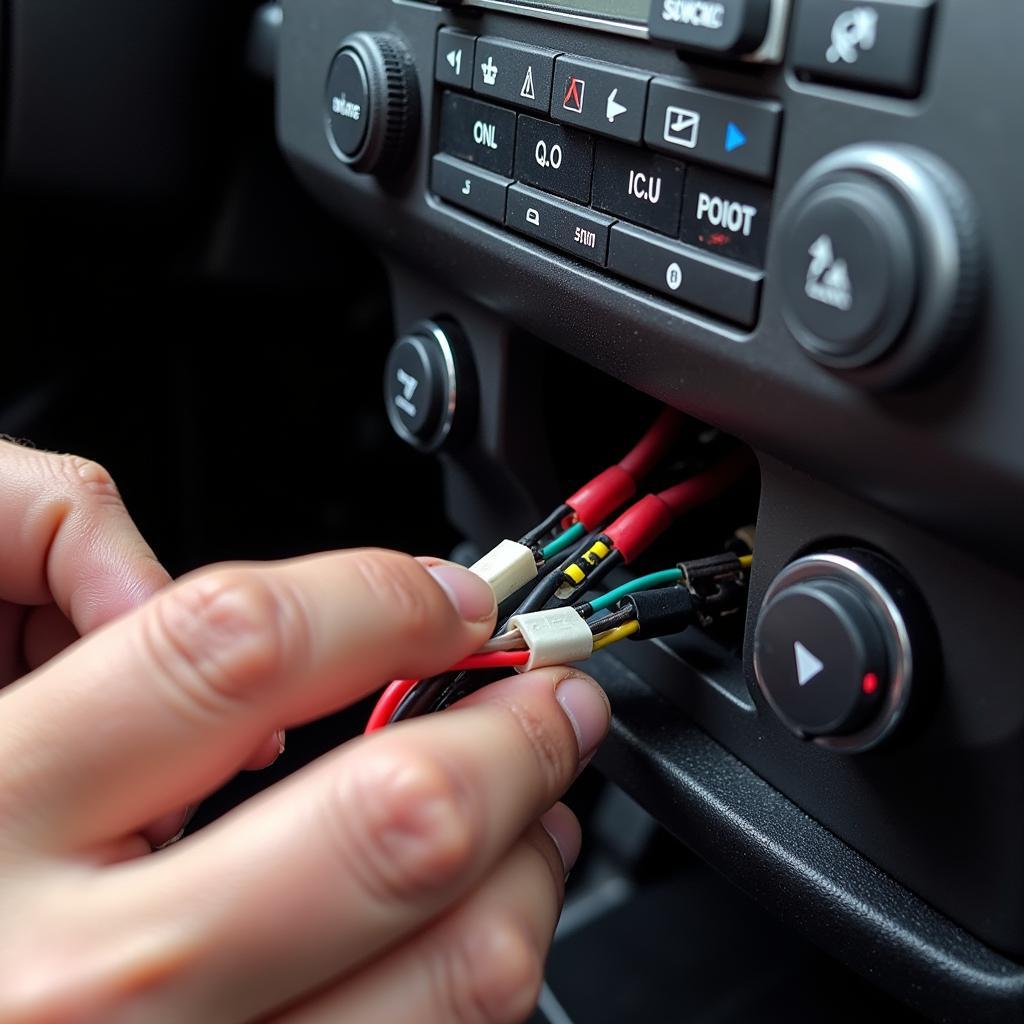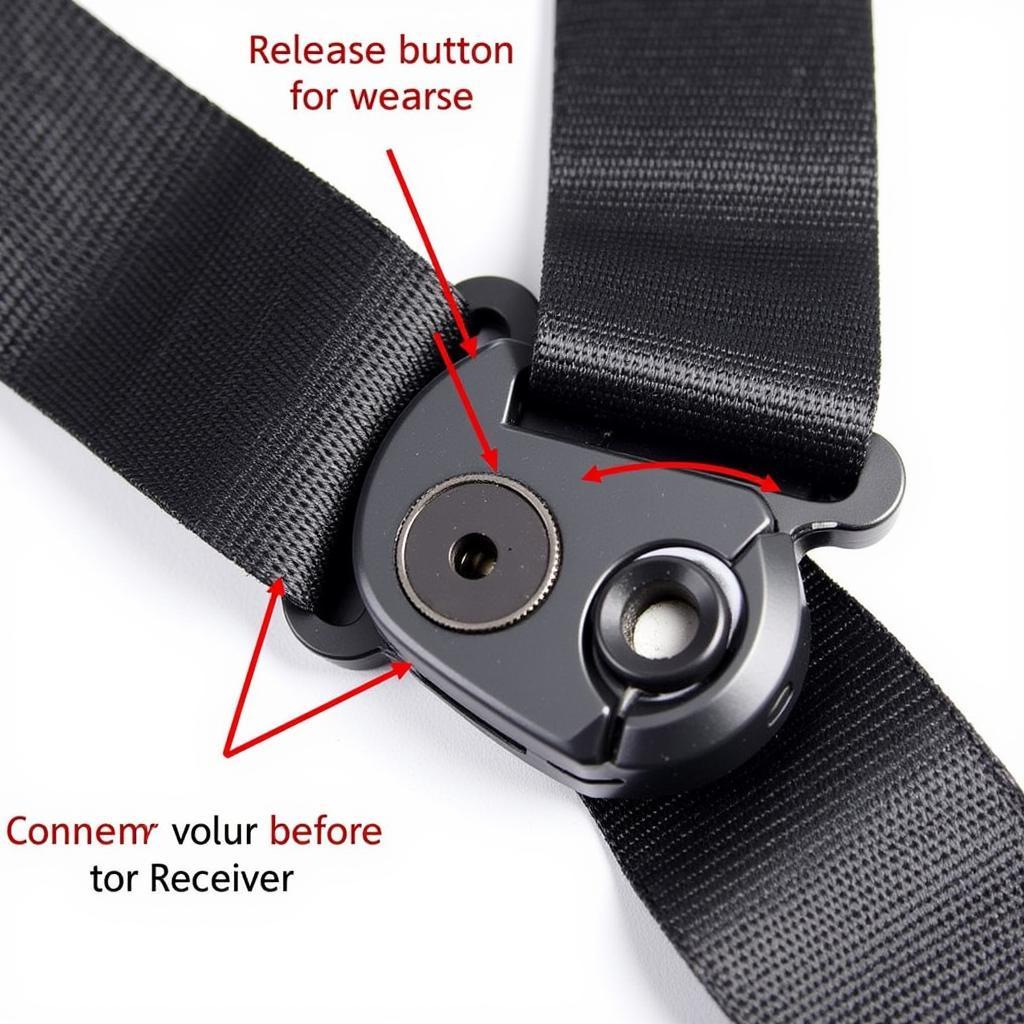Understanding your Nissan car radio stereo audio wiring is crucial for any audio upgrades, repairs, or troubleshooting. Whether you’re installing a new head unit, adding an amplifier, or simply trying to fix a connection issue, having a clear grasp of your car’s wiring is essential. This guide will provide you with valuable information and practical tips to navigate the complexities of Nissan car radio stereo audio wiring.
After reading this guide you’ll be ready to confidently tackle any car audio project you have in mind. Let’s dive in and explore the world of Nissan car radio stereo audio wiring. Check out our comprehensive nissan car radio stereo audio wiring diagram.
Decoding Your Nissan’s Wiring
Nissan, like other car manufacturers, uses a standardized color-coding system for their car audio wiring. However, slight variations can exist between different models and years. Therefore, it’s always best to consult a wiring diagram specific to your vehicle. This will help you avoid potential misconnections and damage to your car’s electrical system.
Understanding Wiring Diagrams
A wiring diagram provides a visual representation of your car’s audio system, showing the connections between different components. It will identify the function of each wire based on its color code. Common colors include:
- Yellow: Constant 12V power supply
- Red: Accessory power (turns on with the ignition)
- Black: Ground
- Blue: Power antenna or amplifier remote turn-on
- Orange: Illumination
- Green, Purple, Gray, White: Speaker wires (positive and negative for each speaker)
Understanding these color codes is the first step towards successfully working with your Nissan car radio stereo audio wiring. For specific wiring information on a 2002 Nissan, check out this resource: nissan 2002 car radio stereo audio wiring.
What are the basic components of a car audio system? The basic components include the head unit, speakers, amplifier (optional), and the wiring that connects everything.
Common Nissan Car Radio Stereo Audio Wiring Issues
Several issues can arise with your Nissan’s car audio wiring. These can range from simple loose connections to more complex problems with the head unit or speakers.
Diagnosing Problems
Start by checking the fuses. A blown fuse is a common cause of audio problems. Next, inspect the wiring for any visible damage, such as cuts, fraying, or loose connections. If everything appears to be in order, you might need to use a multimeter to test the continuity of the wires and check for power at different points in the circuit.
What’s the most common wiring issue? Loose connections are often the culprit behind many car audio problems.
Troubleshooting Tips
- Check the ground connection: A poor ground connection can cause various audio issues, including static and distortion.
- Inspect the speaker wires: Make sure the speaker wires are properly connected to both the head unit and the speakers, and that there are no breaks or shorts in the wiring.
- Test the head unit: If you suspect a problem with the head unit, try connecting a different head unit to see if the problem persists.
 Inspecting a Nissan Car Audio Wiring Harness
Inspecting a Nissan Car Audio Wiring Harness
If you are considering upgrading your car stereo to a modern one, take a look at our recommendations for car radio with bluetooth and gps single din. Modern head units offer a range of features, from Bluetooth connectivity and GPS navigation to advanced audio processing and smartphone integration.
Installing a New Head Unit in Your Nissan
Installing a new head unit can significantly enhance your car’s audio experience. However, it’s important to follow the correct wiring procedure to avoid problems.
Step-by-Step Installation Guide
- Disconnect the negative battery terminal: This is crucial for safety.
- Remove the old head unit: Consult your car’s owner’s manual for instructions on how to remove the trim and access the head unit.
- Disconnect the wiring harness from the old head unit.
- Connect the wiring harness to the new head unit: Make sure all connections are secure.
- Test the new head unit: Turn on the ignition and test all functions.
- Install the new head unit: Secure it in place and reassemble the trim.
- Reconnect the negative battery terminal.
“Always double-check your connections before powering up the new head unit,” advises John Smith, a certified automotive electrician with over 20 years of experience. “This can save you from potential headaches down the road.”
For a detailed wiring diagram for a 2015 Nissan Frontier, you can refer to this resource: 2015 nissan frontier truck car radio stereo audio wiring diagram.
Conclusion
Understanding your Nissan car radio stereo audio wiring can empower you to perform upgrades, repairs, and troubleshooting with confidence. By following the guidelines and tips outlined in this guide, you can enjoy a superior car audio experience. Remember to always consult a wiring diagram specific to your vehicle and take the necessary safety precautions when working with your car’s electrical system.
FAQ
- What tools do I need for car audio wiring? Basic tools include a wire stripper, crimper, electrical tape, and a multimeter.
- How can I identify the speaker wires? Use a multimeter to test the continuity of the wires and identify the positive and negative leads for each speaker.
- What should I do if I encounter a short circuit? Immediately disconnect the negative battery terminal and inspect the wiring for damage.
- Can I install an aftermarket head unit myself? Yes, with the right tools and information, it’s possible to install an aftermarket head unit yourself.
- Where can I find a wiring diagram for my Nissan? Wiring diagrams can be found in your car’s owner’s manual or online resources.
- What’s the difference between constant and accessory power? Constant power is always on, while accessory power turns on with the ignition.
- How do I prevent future wiring problems? Ensure all connections are secure and protect the wiring from damage. Regularly inspect your wiring for any signs of wear and tear.


